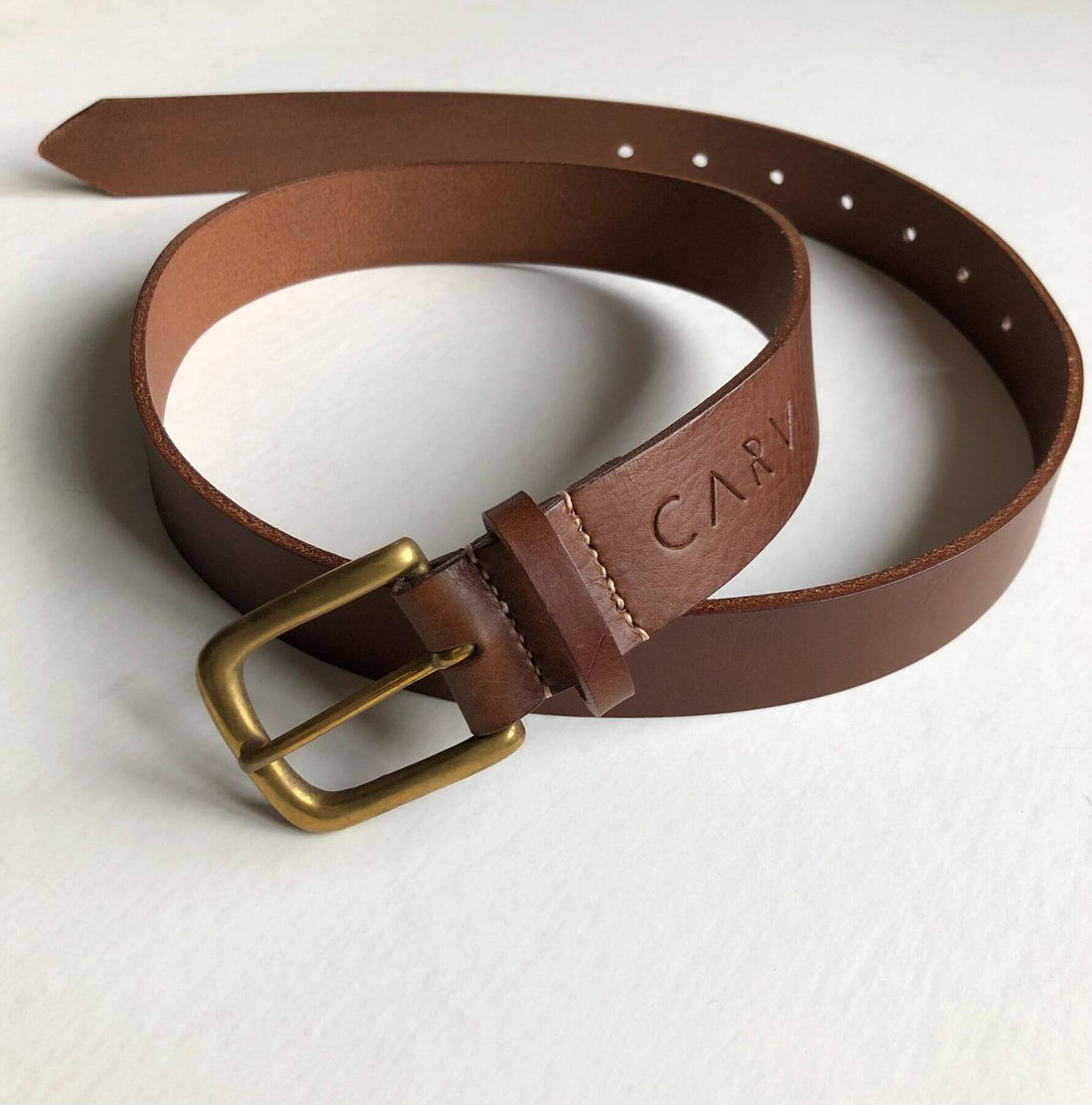
Everything You Need to Know About Leather Belt Making
Everything You Need to Know About Leather Belt Making
There's something deeply satisfying about crafting your own leather belt—from selecting the perfect hide to buckling it round your waist for the first time. Whether you're a complete beginner or looking to refine your leatherworking skills, this comprehensive guide will walk you through everything you need to know about creating beautiful, durable leather belts.

Why Make Your Own Leather Belt?
In an age of fast fashion and mass production, handcrafted leather goods stand apart. A well-made leather belt isn't just an accessory; it's an investment piece that improves with age and wear. When you make your own belt, you control every aspect—from the leather quality to the finishing touches. Plus, there's the undeniable satisfaction of wearing something you've created with your own hands.
Essential Tools and Materials
The Leather
The foundation of any great belt is quality leather. For belts, you'll want leather that's between 8-10oz (approximately 3.2-4mm thick) to ensure durability whilst maintaining flexibility. Full-grain leather is your best bet—it's the strongest and most attractive option, developing a beautiful patina over time.
Top leather choices for belt making:
- Vegetable-tanned leather: Perfect for tooling and stamping, takes dyes beautifully
- Bridle leather: Incredibly durable with a lovely finish, ideal for everyday wear
- Italian leather: Premium option with exceptional quality and feel
Essential Tools
Cutting Tools:
- Sharp craft knife or leather shears
- Metal ruler (at least 1 metre long)
- Cutting mat
Marking and Measuring:
- Leather marking tools
- Awl for precise marking
- Wing dividers for consistent spacing
Hole Making:
- Leather punch set or rotary punch
- Drive punches for specific hole sizes
- Pricking irons for hand-stitching holes
Finishing Tools:
- Edge beveller
- Burnishing tool (bone folder or canvas)
- Leather dyes and finishes
Browse the complete range of leatherworking tools at British Leather Supplies' tools section.
Hardware
- Belt buckle (choose based on your belt width—typically 35mm or 40mm)
- Chicago screws or rivets for buckle attachment
- Keeper and tip (optional but professional-looking)
Find quality belt hardware at British Leather Supplies' hardware collection.
Step-by-Step Belt Making Process
1. Planning and Measuring
First, determine your belt size. Measure your waist where you typically wear a belt, then add 15-20cm (6-8 inches) for the buckle end and adjustment holes. Standard belt widths are 35mm (1⅜") or 40mm (1½").
2. Cutting the Leather
Mark your leather carefully—measure twice, cut once! Use a sharp knife and metal ruler to ensure clean, straight edges. For a professional look, slightly round the tip end of the belt.
3. Preparing the Edges
Use an edge beveller to create a slight chamfer along all edges. This not only looks more professional but also feels better against your body and prevents cracking.
4. Creating the Buckle End
The buckle end needs a slot for the buckle's prong. Mark this carefully—it should be centred and sized appropriately for your buckle. Either use a craft knife to cut the slot, then clean up with a smaller blade or leather punch, or use an oblong slot punch tool to make a clean hole.
5. Punching Adjustment Holes
Space your holes approximately 2.5cm (1 inch) apart. Use a leather punch that matches your buckle's prong diameter (typically 3-4mm). Ensure the holes are perfectly aligned by marking them first with an awl.
6. Attaching the Buckle
Secure the buckle using Chicago screws, rivets, or by folding the leather over and stitching. Chicago screws offer the cleanest look and allow for easy buckle replacement if needed.
7. Finishing Touches
Edge Finishing: Apply edge paint or burnish the edges with water and a burnishing tool for a smooth, professional finish. This step transforms your belt from homemade to professional-quality.
Dyeing and Conditioning: If using undyed leather, now's the time to apply dye. Work in thin, even coats, allowing each to dry completely. Finish with a leather conditioner to keep the leather supple.
Advanced Techniques
Tooling and Stamping
Once you've mastered basic belt making, consider adding decorative elements. Vegetable-tanned leather is perfect for tooling patterns or stamping designs. This requires additional tools but creates truly unique pieces.
Hand Stitching
For an ultra-premium finish, consider hand-stitching your belt edges. This technique, using a saddle stitch, is stronger than machine stitching and adds a distinctive handcrafted appearance.
Multiple Layers
Some belt styles use multiple layers of leather for added thickness and durability. This technique requires careful planning but results in exceptionally robust belts.
Common Mistakes to Avoid
- Using leather that's too thin: Your belt won't hold up to daily wear
- Uneven hole spacing: Measure carefully and use a template
- Sharp edges: Always bevel and finish your edges properly
- Poor buckle attachment: Ensure it's secure—this is the highest-stress point
- Rushing the finishing: Take time with edge finishing and dyeing for professional results
Caring for Your Handmade Belt
A well-made leather belt can last decades with proper care:
- Clean regularly with a damp cloth
- Condition every 6-12 months with quality leather conditioner
- Store flat or hanging to maintain shape
- Avoid excessive moisture and heat
Building Your Skills
Start with a simple, straight belt in natural vegetable-tanned leather. As your confidence grows, experiment with different leather types, decorative techniques, and hardware styles. Each belt you make will teach you something new about working with this wonderful material.
Sourcing Quality Materials in the UK
For the finest leather, tools, and hardware, British Leather Supplies offers everything you need to create professional-quality belts. Their selection includes:
- Premium British and European leather hides
- Professional-grade leatherworking tools
- Quality hardware and findings
- Dyes, finishes, and conditioning products
- Expert advice and tutorials
Conclusion
Making your own leather belt is a rewarding project that combines practical skill with creative expression. Whether you're creating a simple everyday belt or an elaborate tooled masterpiece, the fundamentals remain the same: quality materials, proper techniques, and attention to detail.
The satisfaction of wearing a belt you've crafted yourself, knowing it will improve with age and potentially last a lifetime, makes the investment in time and materials thoroughly worthwhile. So gather your tools, select your leather, and begin your journey into the timeless craft of leather belt making.
Ready to start your belt-making journey? Visit British Leather Supplies for all your leatherworking needs, from professional tools to premium belt hardware and expert guidance.
